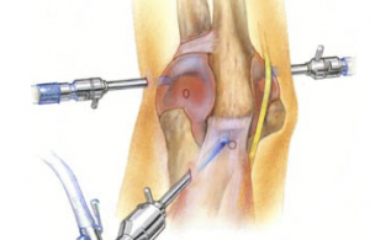by Dr. Adam Farber
Joint pain can be very limiting, often restricting mobility or a person’s ability to take part in day to day activities. However, joint replacement surgeries can be equally taxing on the body.
Individuals will experience a great deal of discomfort and there is always the risk that they will not be able to regain the mobility they once  had following this surgery. Those that are at risk for joint damage can use home care to help reduce their risk of surgery as much as possible.
had following this surgery. Those that are at risk for joint damage can use home care to help reduce their risk of surgery as much as possible.
Avoiding Joint Replacement Surgery
The good news is in most cases surgery for joint pain can be avoided if patients take the time to take on some proper home care. Understanding when to push yourself versus when to give your joints a rest is key with home care, so patients are encouraged to work with their Phoenix orthopedic doctor to ensure that their treatment options are having the proper effect.
- Obesity is considered one of the top causes of damage to the leg joints that requires surgery to correct. Being overweight puts excess stress on the joints which can cause the cartilage here to break down more quickly than normal. Losing as little as 5 percent of your body weight can relieve some of this pressure, helping patients to avoid arthritis symptoms.
- Scientists once thought that resting the joints was essential to managing joint pain, but they have come to find that limiting physical activity can actually make joint damage worse. Those at risk for joint replacement surgery are encouraged to try to stay active, performing aerobic exercises at least 3 times a week. Strength training is also helpful in maintaining joint health. Exercising regularly will also help to keep you at a healthy weight, which can prevent further joint damage.
- Massage has been found to be very effective in managing conditions such as osteoarthritis which can increase the need for joint
replacements. Deep tissue massage helps to relax the muscles to increase blood flow to the joints. This will provide the joints with more nutrients and help to take down swelling to reduce pain.
- Nonoperative pain management treatments. Orthopedic surgeons such as Dr. Adam Farber offer considerable nonoperative knee pain options. This may include joint injections with cortisone or hyaluronic acid. It also may include regenerative medicine treatments such as platelet rich plasma therapy. PRP therapy may protect existing cartilage and possibly help more be created.
- Knee bracing – With a knee unloader brace, avoiding knee repalcement is often possible. The brace unloads the painful side of the knee, and shifts stresses to the side with minimal arthritis.



